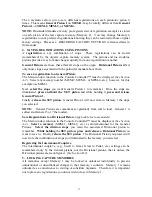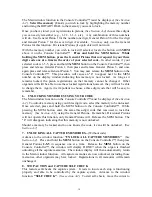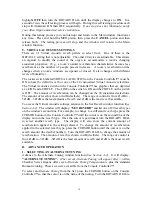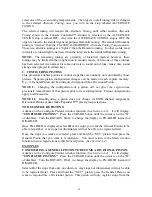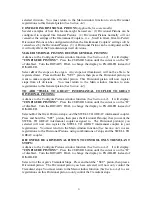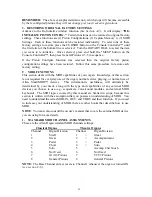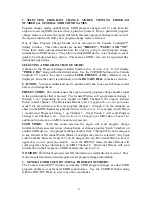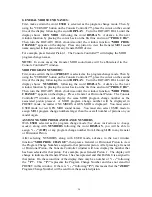
9
wring it thoroughly damp dry. Loosen the dirt with this cloth, and then polish
immediately with the dry cloth. Do not use soap or detergent on keys or rocker stops.
You have purchased a remarkable organ that not only faithfully reproduces the organ
traditions of the past but also anticipates the innovations of the future. Should you have
questions that are not addressed in this manual, please do not hesitate to contact your
local Allen Organ representative. Welcome to the family of satisfied Allen Organ
owners!
IX. SAFETY
CAUTION
Do not plug the instrument into any current source other than 105-128 volts,
50/60-Hertz alternating current (AC). A verified-grounded outlet is essential to
proper operation and protection of the instrument. Proper polarity should be
checked with an AC circuit analyzer before connecting the organ.
Do not change the cable plug or remove the ground pin or connect with a two-pole
adapter.
If you are in doubt about your electrical connection, consult your local electrician
or electrical power company.
In churches where circuit breakers are turned off between worship services, the
circuit breaker affecting the organ console AC power should have a guard installed
to prevent its being accidentally switched off.
Read and comply with all instructions and labels that may be attached to the
instrument.
Warning
:
This equipment generates, uses, and can radiate radio frequency energy
and, if not installed and used in accordance with the instruction manual, may cause
interference to radio communications. It has been type tested and found to comply
with the limits for a Class B Computing Device in accordance with the
specifications in Subpart J of Part 15 of FCC Rules, which are designed to provide
reasonable protection against such interference in a residential installation. Should
this equipment cause interference to radio communications, the user at his own
expense will be required to take whatever measures may be necessary to correct
the interference. Whether this equipment actually causes the interference to radio
communications can be determined by turning the equipment off and on. The user
is encouraged to attempt to correct the interference by one or more of the
following measures:
•
Reorient the receiving antenna.
•
Relocate the organ with respect to the receiver.
•
Move the organ away from the receiver.
•
Plug the organ into a different electrical outlet, so that the organ and receiver
are on different branch circuits.
If necessary, the user should consult the dealer or an experienced radio technician
for additional suggestions.

















